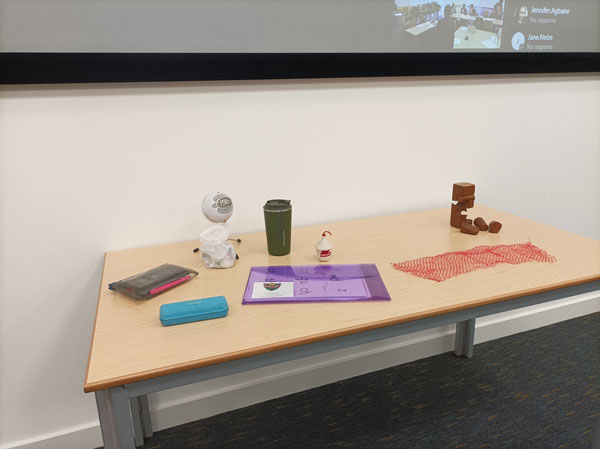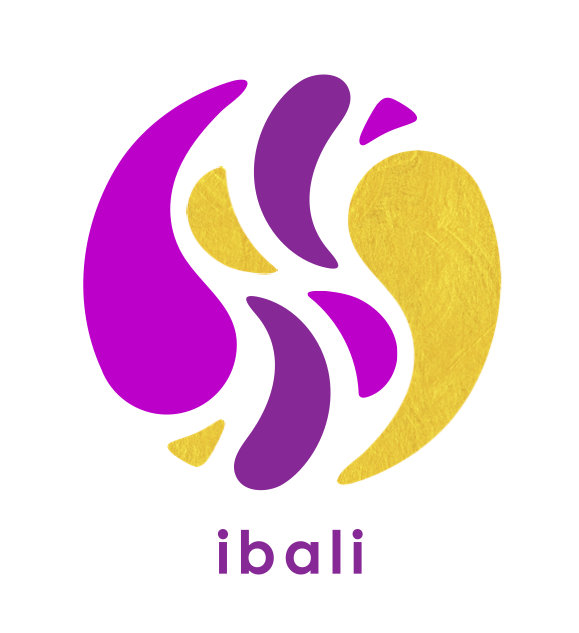You are here
- Home
- Research
- Networks
- Ibali
- Blogs
- Beyond binaries: navigating inclusion/exclusion at the intersection of our personal and professional lives
Beyond binaries: navigating inclusion/exclusion at the intersection of our personal and professional lives

Coomerene Rodrigo, Alison Buckler, Jennifer Agbaire
Inclusion is often discussed in the abstract: what it means for other people. But the duality of inclusion and exclusion defines all our individual and communal existences, consciously, sub-consciously and pervasively.
The Ibali network, using storytelling as an exploratory method, interrogates this inclusion/exclusion duality in diverse educational contexts. So, it was only natural that the recent Ibali Learning Event at the Open University started with participants sharing an object that, to them, was representative of this.
The Nigerian bracelet that characterised an alternative to the mainstream and, also, an inalienable sense of belonging. Technological artefacts: the mobile phones that both include and exclude, depending on one’s ease of access; the microphone that can amplify voices – but only if one is holding it; the computer mouse that helps to navigate different online worlds, but is often missing from a basic laptop set-up. The swimming goggles which embodied the end of one phase in life – exclusion through physiological changes – and the start of another – inclusion through the joy of wild swimming. The box that can create pockets of diversity. The patina of lichen on a twig characterising the essential and resilient nature of inclusion: its symbiotic relationship with other variables, including those that exclude. The childhood photograph that showed an outsider in an historic setting, who now works to create inclusive spaces for others. These objects epitomised the varied senses of belonging and peripherality of the participants.
There were as many definitions, circumstances, and objects of inclusion – and, by its nature, exclusion – as there were participants at the event. This is because there is a world of meaning between inclusion/exclusion. Indeed, inclusion is a ‘culturally relative term’ that goes beyond a binary framing – in fact, it is a personally relative term that shapes our sense of reality. It is a shape-shifter, changing according to circumstance and context, embodying different characteristics and resonating with our multiple identities. At the event we talked about how the inclusion and exclusion we experience can affect our epistemological perspectives in our work and in our research. Thus, the black educator who grew up feeling excluded in a white environment may be more attuned to the inclusions and exclusions of other marginalised students in their practice and research. One with profound myopia might naturally be predisposed to prioritise learners with largely invisible or normalised disabilities. This is not to say that they would not be equally accommodating and welcoming of students with other differences or challenges, but rather that personal experiences of inclusion and exclusion create a frame of reference for how we experience and understand our social worlds.
This is evident in Teaching to Transgress: Education as the Practice of Freedom, where hooks eloquently praises the black teachers in her pre-desegregation black school who understood that educating black students required a ‘political commitment’. Post-desegregation, however, the politics of her school were reactive, i.e., constantly countering white racist assumptions about black students, but never counter-hegemonic, bringing with it a sense of un-belonging and exclusion as black students’ very existence in the school was reframed through a white supremacist lens: the responsibility for making desegregation a success was placed on them. Ironically, measures for inclusion resulted in black students feeling more marginalised in desegregated schools than they had in their all-black schools – for hooks, it was ‘the difference between education as the practice of freedom and education that merely strives to reinforce domination’.
Inclusion is also intersectional, encompassing interconnected layers of identities of individuals. These identities are dynamic, changing in response to different stages in life. Crenshaw coined the term ‘intersectionality’ to refer specifically to the intersecting discrimination and subordination faced by black women, from anti-racist and feminist perspectives. Today, in education, that term is gradually taking on life as a metaphor for recognising and understanding the multiple forms of inequality that compound each other and create barriers to access and participation for learners. In personal terms, intersectionality also signifies a layered understanding of exclusion. Historically, white students may not be considered excluded from education in the UK, yet men and women of lower socio-economic status may have been marginalised through social expectations and find it difficult to re-engage with education. South Asians graduates with parents who have also been to university might not be considered disadvantaged in their own communities, yet are likely to face obstacles in accessing funding for postgraduate education in HEIs in the Global North – funding that other postgraduate students might take for granted.
In the research and practice of inclusion, definitions, frameworks and language matter. Even as we strive for equity and justice, there is still a tendency to define or frame inclusion from the perspective of the Global North and, in some ways, to reproduce the domination of largely hegemonic views. This connects to the perennial debate about who should research what and where. For instance, can a UK educator furnished with co-created research evidence make statements or recommendations about inclusion in a Pakistani secondary school? Are there any circumstances in which an education adviser from The Netherlands might be best placed to make recommendations for a gender programme at a rural school in Cameroon? What additional and/or reductive perspectives might they bring? On the other hand, what might influence how an inclusion specialist trained in South Africa surfaces nuances of exclusion in a school in the UK?
Our view in this debate is tentatively optimistic as we engage with colleagues from across the world committed to learning, un-learning, re-learning about more meaningful co-creation of knowledge with those who are closest to the issues. Our primary point in this blog is that this might need to involve more critical and honest reflections around personal experiences of inclusion/exclusion and how they influence and interact with the perspectives of the wider team and the individual and collective impacts of our inclusion work. It will likely also involve the (at least partial) rejection of top-down, paternalist approaches that sustain and are driven by international research frameworks and expectations and attempts to resist the temptation to translate alternative knowledges and expertise through the authoritative voice of Western academia. In this sense, inclusion is also a partner to decolonisation: it requires interrogation of socially, culturally and historically constructed categories of exclusion, many of which trace their roots to enduring colonial legacies. It is imperative that the international agenda of inclusion recognises these derivations and places policies that are compatible with local communities at the heart of education.
Inclusion in education, therefore, is a multidimensional concept, born out of opposition to exclusion developed through unequal power relationships. Contemporary critical perspectives seek to overcome the influence of deficit approaches and transform educational settings into more inclusive places, and our second key point is that recognising the duality of inclusion/exclusion is an important step to potentially letting go of the long-held pursuit of a ‘fully inclusive’ setting.
Ultimately, for inclusion to be substantive, sustainable and make sense, it needs to be guided by principles of humanity and dignity, which takes courage, introspection, empathy and humility on the part of educators and researchers and the teams they work in. In the internationalisation of education, inclusion cannot be an add-on; instead, it should be fundamental to the way we work: for example, what and why we teach/research, who we teach and research with, how we teach/research and where we teach/research – it should underscore everything we do and be embedded in our intersectional ontological perspectives. As with the artefacts at the Ibali event, we need to reflect on our own and others’ dualities of inclusion and exclusion to deepen our understanding. In this way, the professional looks to the personal, which could become the political and lead to the progressive.
This blog is based on the authors’ involvement in the Ibali Inclusion Learning Day held at the Open University campus in the UK, in December 2023. The day was co-hosted by the Ibali Project (AHRC-funded research grant AH/V009117/1) and the Open University’s Centre for the Study of Global Development (CSGD). While the views in the blog represent those of the authors, they are partly drawn from the rich contributions and conversations during the day, including with other members of the Ibali team. We would like to thank the participants for engaging so thoughtfully and enthusiastically with the discussions and look forward to many more.
.jpg)
